Waipu – Nova Scotia’s New Zealand Connection
In my first post from New Zealand I gave a number of reasons why, in visiting this amazing country for the first time, I recommended travelling with Canadian tour company Adventures Abroad. At the same time, I suggested that this was a country that was quite amenable to exploring on one’s own which is exactly what Alison and I did for both the week before the AA trip and for ten days after it. There were a number of places we definitely wanted to see that were not on the AA itinerary, including the town of Waipu which has a direct connection to Nova Scotia and where distant relatives of Alison are almost certainly living today.
Before I get to Waipu, a few words about travelling on your own in New Zealand. Firstly, since almost all international flights land at Auckland airport, you’ll inevitably start your journey there. Prior to departing Canada I had gone online to find out what documents were required to visit New Zealand as a tourist. The New Zealand government site was quite clear that you needed a New Zealand Electronic Travel Authority (NZeTA) for entry and I had dutifully applied and paid for same months in advance. Before the plane landed the crew had come by with New Zealand Traveller Declarations which I didn’t take because I had the NZeTAs. When we got to the immigration officer and handed them the so called ‘required forms’ he told us we needed to fill out the Traveller Declarations I had turned down on the plane. I could have filled these out online here. Long story short, the NZeTAs were a waste of time and money and we spent an extra hour or more getting through customs because of this mixup, which I blame entirely on the misinformation on the New Zealand website.
To assist me in planning those portions of the trip we would be doing on our own, I enlisted the services of Cheryl Bailie, a Canadian expert on New Zealand, based in North Vancouver. Cheryl had made recommendations as to the best places to stay and booked accommodations, car rentals and our flight from Christchurch to Wellington at the end of the AA trip. After finally getting through customs we walked to the rental car section and picked up this Mazda CX-5, which was an upgrade from the sedan Cheryl had booked. Ordinarily I love upgrades, but in the case of New Zealand, bigger is not always better. Although I have driven right hand vehicles many times and in many places, New Zealand’s secondary roads are very narrow with a ton of blind curves and one lane bridges. I’ll admit that it took me a day or so to get used to driving the Mazda on these roads. For the second part of the trip on our own we had Toyota Corolla which I felt much more comfortable driving than the much bigger SUV.
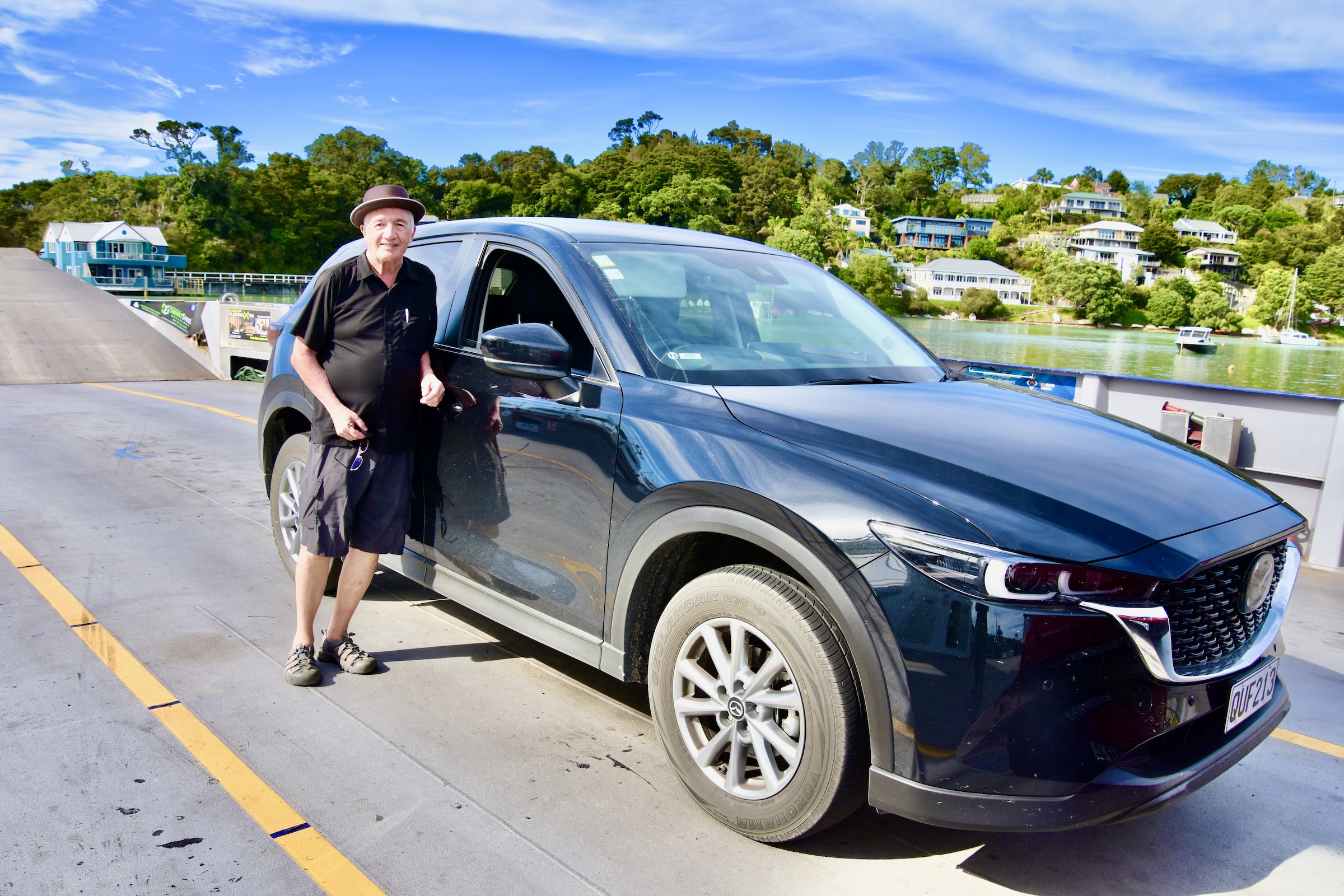
Once we got out of the airport we spent the first night in Auckland, when in retrospect, we probably should have headed north directly from the airport. Not that I regretted spending time in Auckland, but like my home city of Halifax, the city planners are doing everything they can to discourage vehicular traffic in favour of bikes and buses. In other words, driving in downtown Auckland is a pain in the ass and I will avoid it on our next trip.
Ok, let’s talk about Waipu and why it was the first must-visit place on our New Zealand itinerary.
Rev. Norman MacLeod
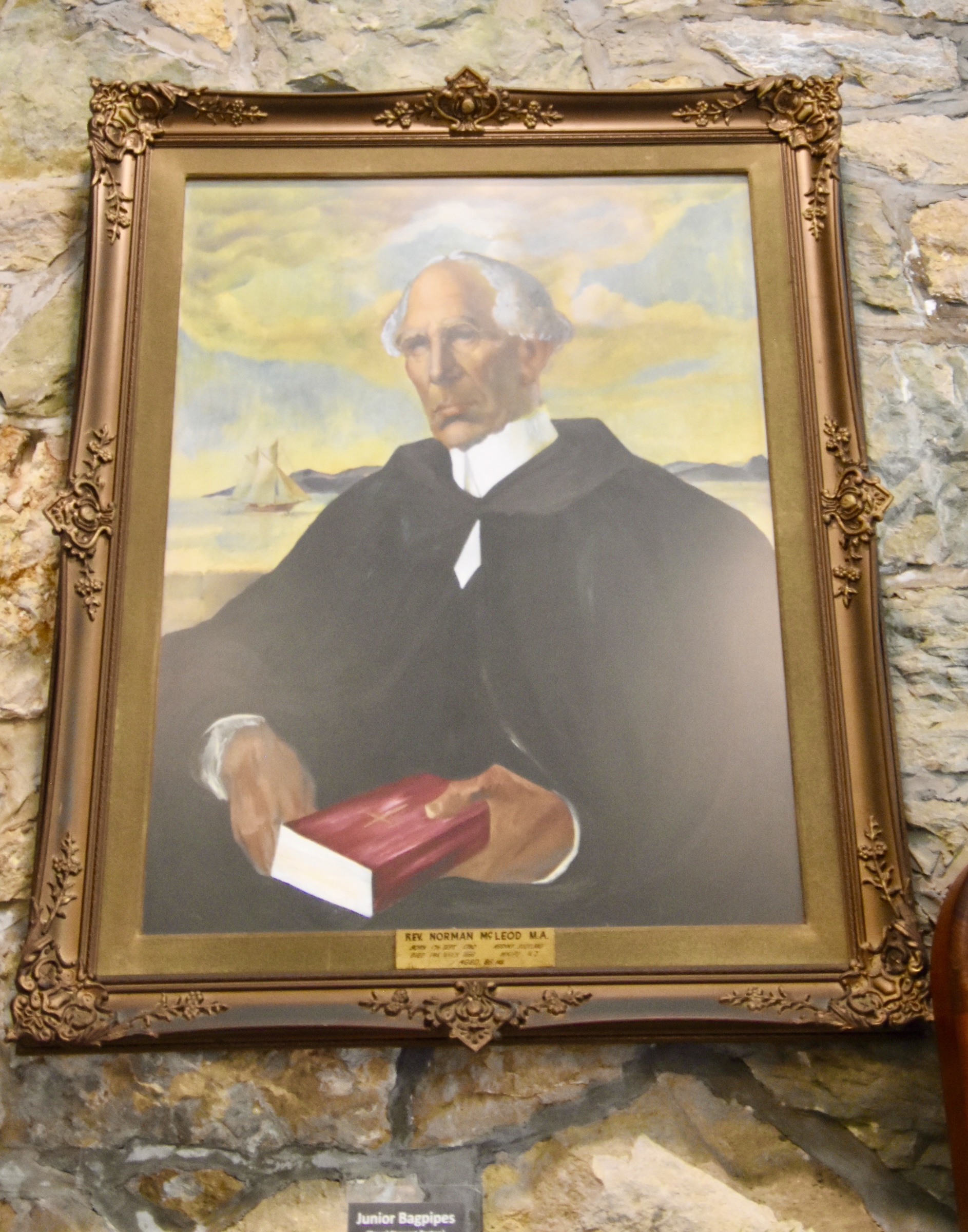
Reverend Norman Macleod is an important figure in both Nova Scotian and New Zealand history. For a detailed account of how he came to be so, you can read this entry in the Encyclopedia of New Zealand. For my part I’ll give the Cole’s notes version as follows.
MacLeod started his long journey in the highlands of Scotland although the exact date and place of his birth are uncertain. We do know from university records that he studied theology at both Aberdeen and Edinburgh. From early on it was clear that Norman was a contrarian and he found himself at odds with the Presbyterian establishment which he thought had gone too soft, too liberal and too far from the teachings of John Knox, the man who brought John Calvin’s ideas from Switzerland to Scotland. Never ordained in Scotland, he became a firebrand preacher who attracted large crowds, but was constantly hounded by the authorities to the point that in 1817 he emigrated to Pictou, Nova Scotia. Pictou was founded in 1767 by a group of settlers from Philadelphia, but really took off in 1773 when the ship Hector arrived from the Scottish highlands with about 200 emigrants who started building a town that to this day looks like it belongs more in Scotland than North America.
By 1817 when MacLeod arrived, Pictou was the thriving de facto Scottish capital of the colony of Nova Scotia and the parishioners were overwhelmingly Presbyterian. MacLeod, once again starting to lash out at the laxness of the local Presbyters, drew large crowds who became known as ‘Normanists’. In effect, from this time on, he became a cult leader. Like many cult leaders, he decided to take his flock away from ungodliness and in 1820 they built a ship, appropriately named the Ark, determined to sail to United States to start life in a new Eden. However, as the ship rounded the top of Cape Breton Island it was storm tossed into St. Ann’s Bay, which MacLeod recognized as the beautiful spot he had been looking for. Here he and his adherents built a successful community that thrived for several decades until the potato blight hit Cape Breton Island in 1847. Most people think only of Ireland when they think about the great potato famines of 1845-52, but it also struck Scotland and Nova Scotia as well.
Once again, MacLeod decided it was time to move on, this time all the way to Australia where one of his sons was living in Adelaide. He oversaw the building of a ship, the Margaret, and in 1851 he left St. Ann’s with many of his flock and arrived in Australia in 1852. At the time Australia was in the midst of a gold rush and with all of the shenanigans associated with gold rushes, MacLeod did not find it a suitable place for his next new Eden. Finally, after successfully petitioning the governor of New Zealand for land to buy, MacLeod and his disciples found their way to the Waipu River in what is known as the Northland of the North Island. Here at last this modern day Moses laid down permanent roots that link Nova Scotia to New Zealand to this day.
The Nova Scotia connection to MacLeod is The Gaelic College which sits on the very lands that Rev. MacLeod once occupied and is the only institution in the New World dedicated to preserving Gaelic language, song, dance and crafts. From the New Zealand perspective, MacLeod’s was not the only ship to bring settlers from Nova Scotia to Waipu. MacLeod still had a large following in the Pictou area and four more ships arrived bringing a total of over 800 transplanted Nova Scotians to Waipu by 1860, some of whom would undoubtedly have been relatives of Alison’s forebears.
Old age seems to have mellowed Norman MacLeod somewhat, as now, as the undisputed patriarch of his own church, he lived out his remaining years in relative harmony, dying in 1866.
So with this background, let’s examine firsthand the legacy of Norman MacLeod.
Visiting Waipu
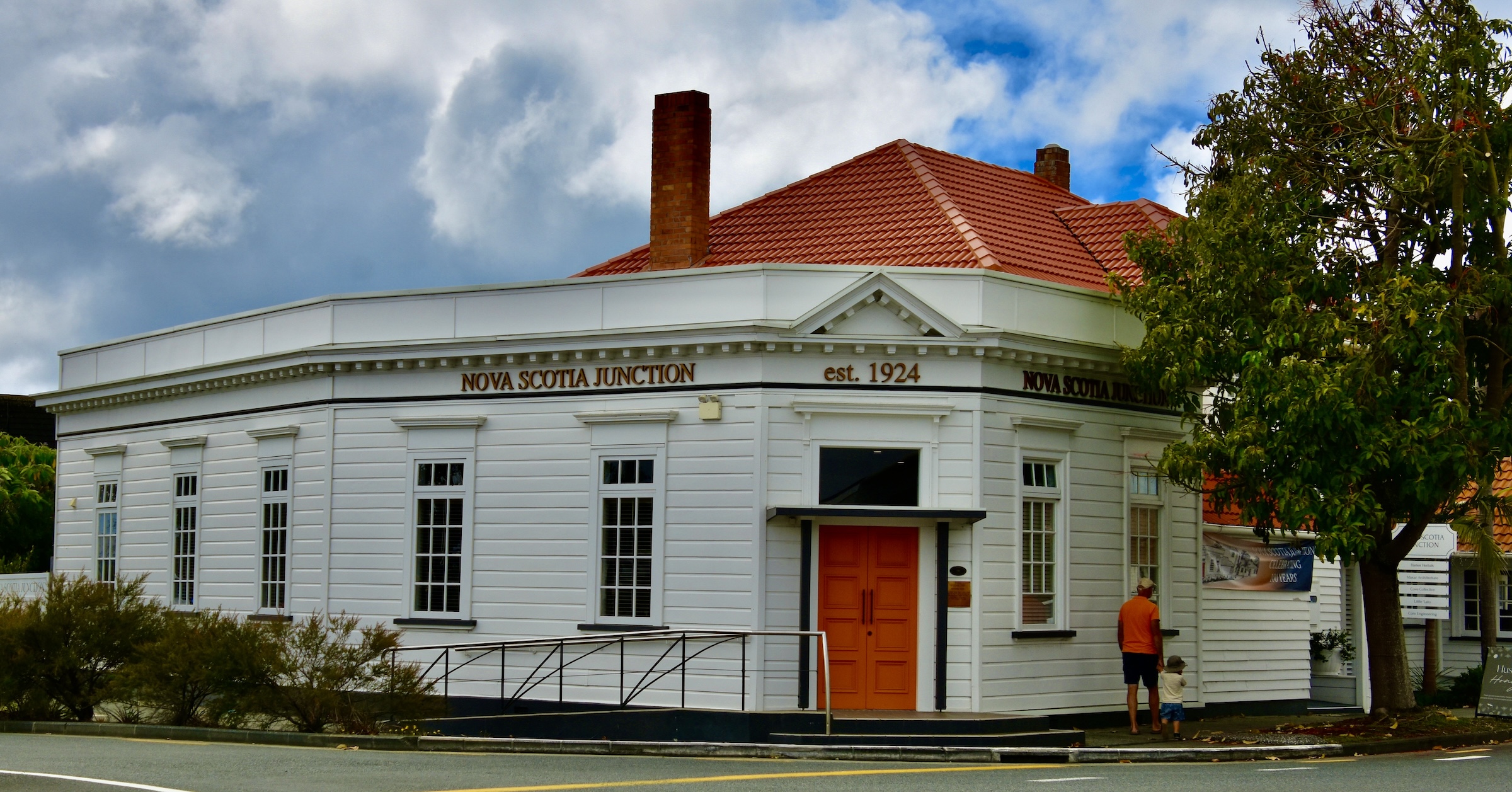
Today Waipu is a small town of just over 1,300 inhabitants some 120 kms. (75 miles) due north of Auckland. It is popular with New Zealand tourists, not for its Nova Scotian heritage, but rather its nearby beaches, glow worm caves and golf course. However, as we entered the town and drove the length the main street, there was no doubt about the Nova Scotia connection.
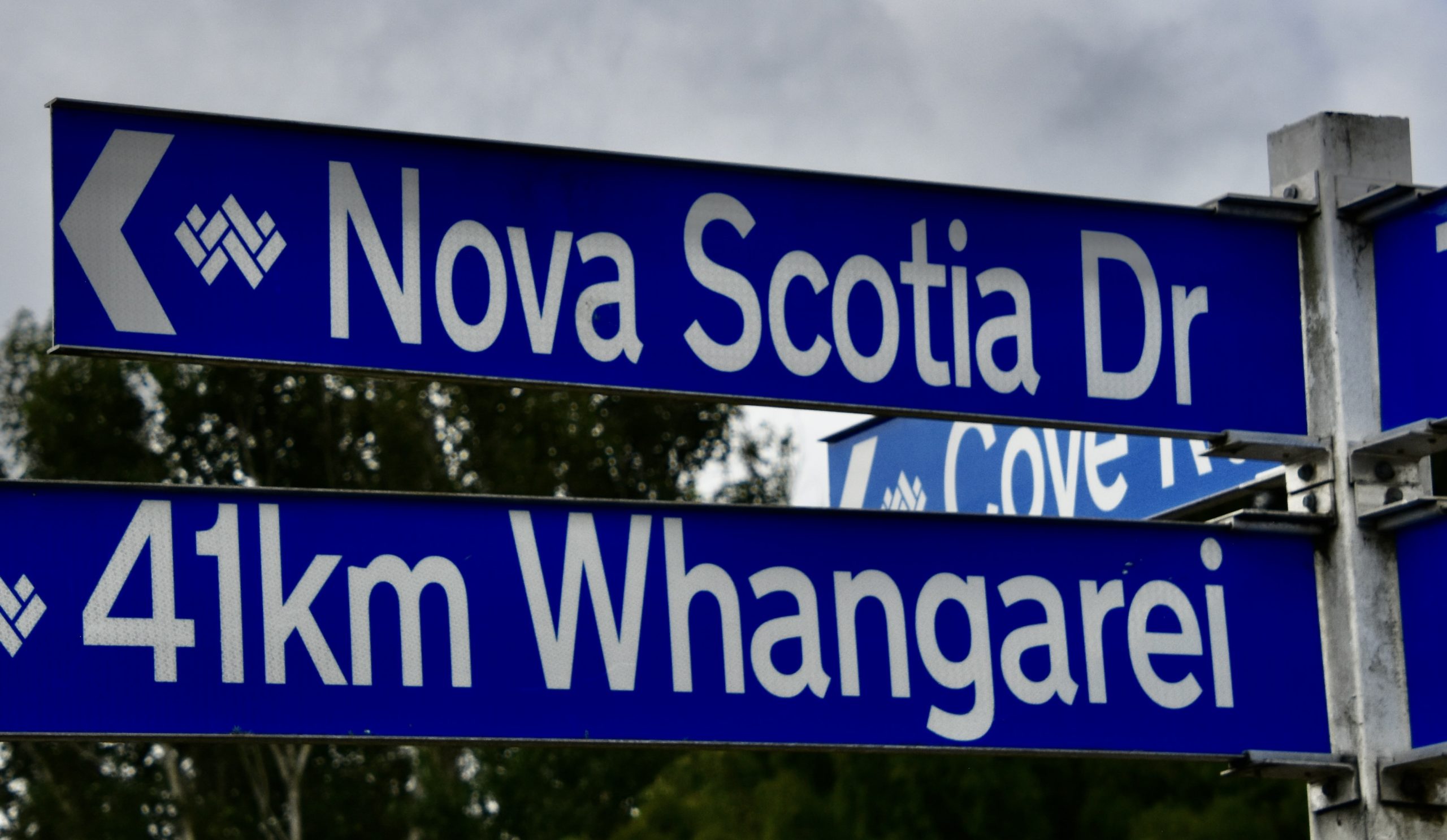
As I noted in my first post on New Zealand, the small towns throughout the country are a real delight to visit, due to their unspoiled character, friendliness and pride of place; Waipu is no exception. Like every town we visited in New Zealand, Waipu has a prominent war memorial with an alarmingly long list of both WWI and WWII casualties. Unlike most others, Waipu’s is topped with a pugilistic Scottish lion.
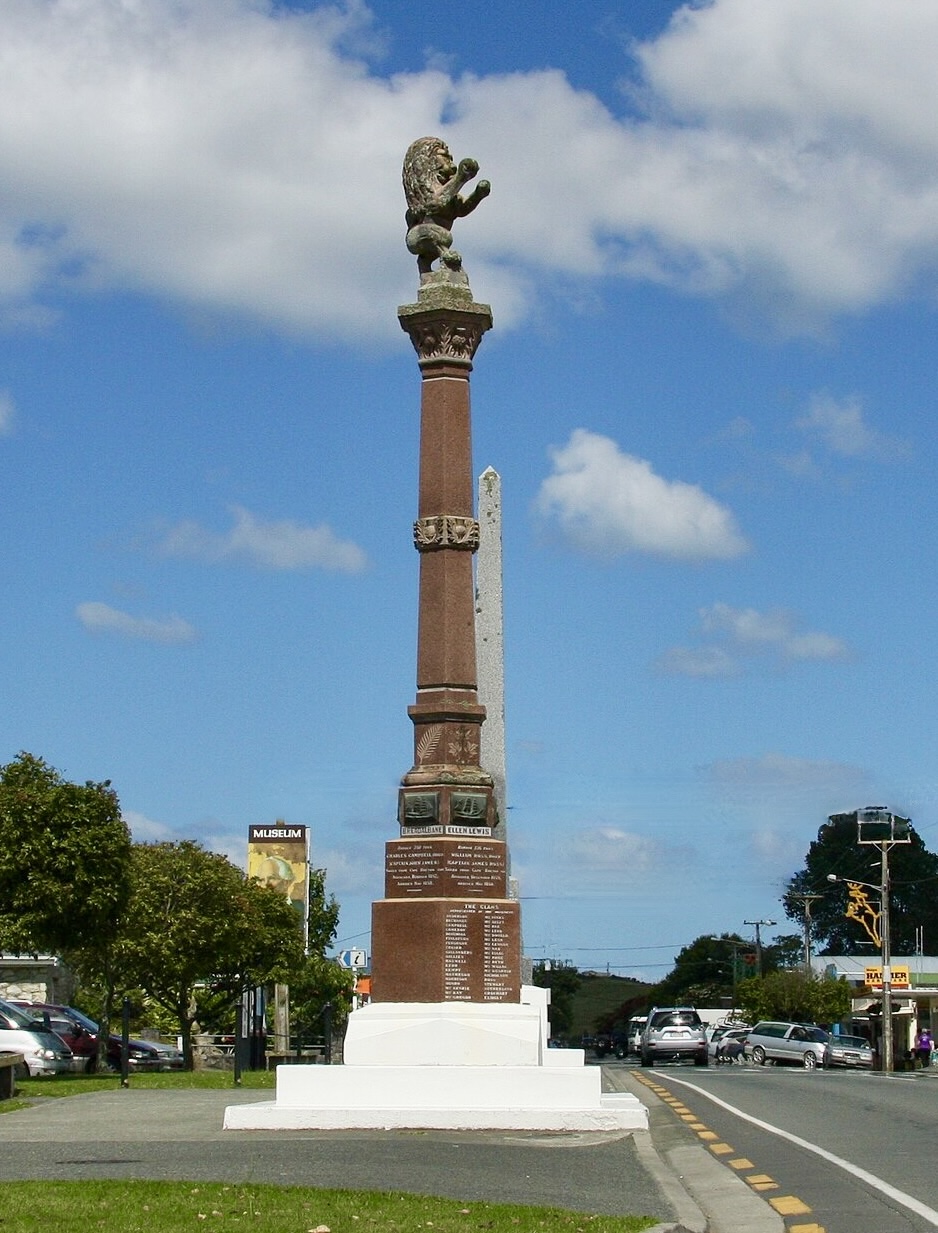
The War Memorial is the figurative centre of town with a number of interpretive panels on both sides of it, telling the history of the place. Again, this seems to be a commonality among most New Zealand towns, they are proud of their past and not afraid to let you know it.
Immediately behind the War Memorial is a public parking lot with Rev. MacLeod’s Presbyterian Church on one side.

And the Waipu Scottish Migration Museum on the other.
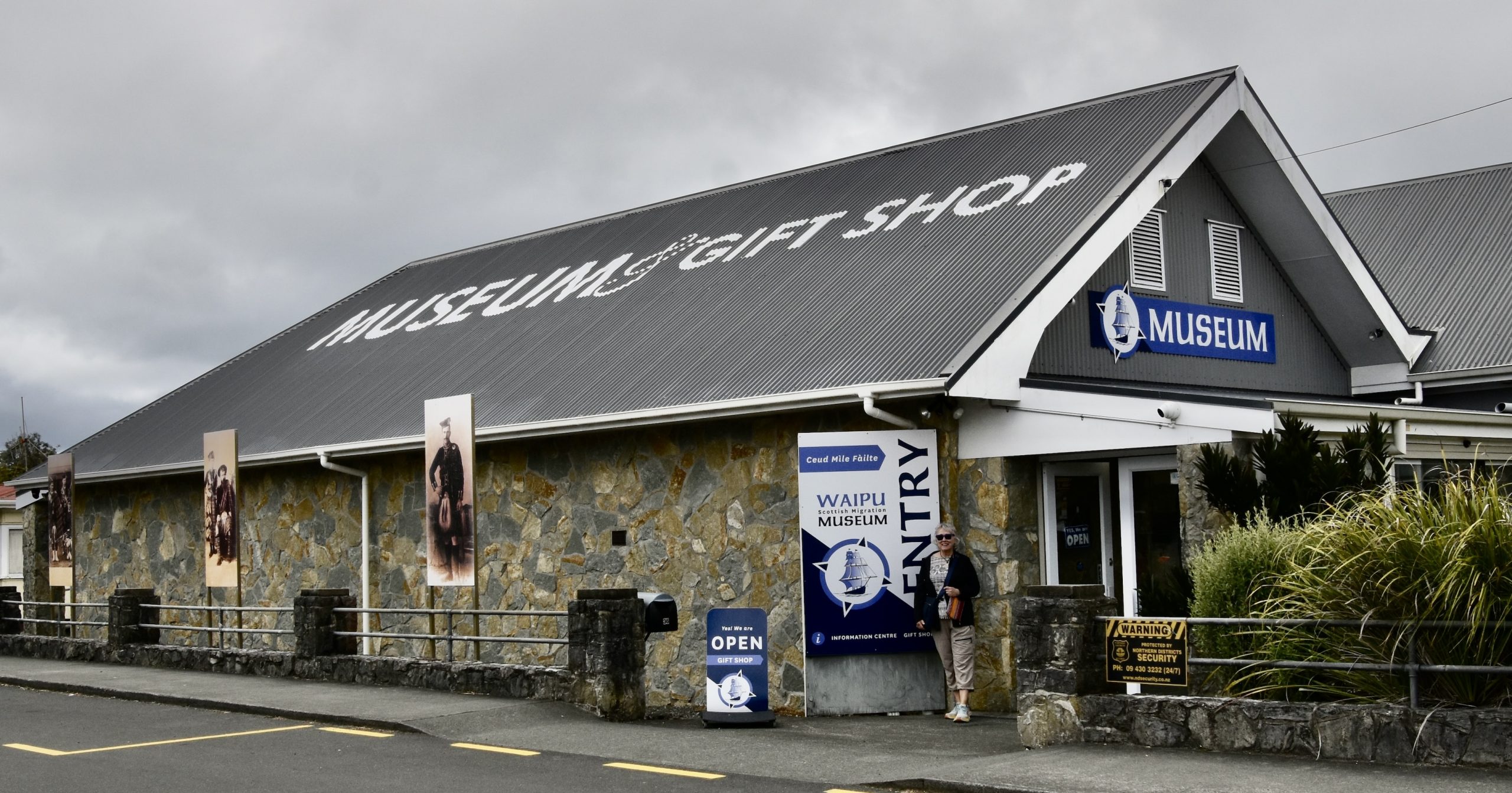
Before entering I note that it has the Nova Scotia flag flying out front.
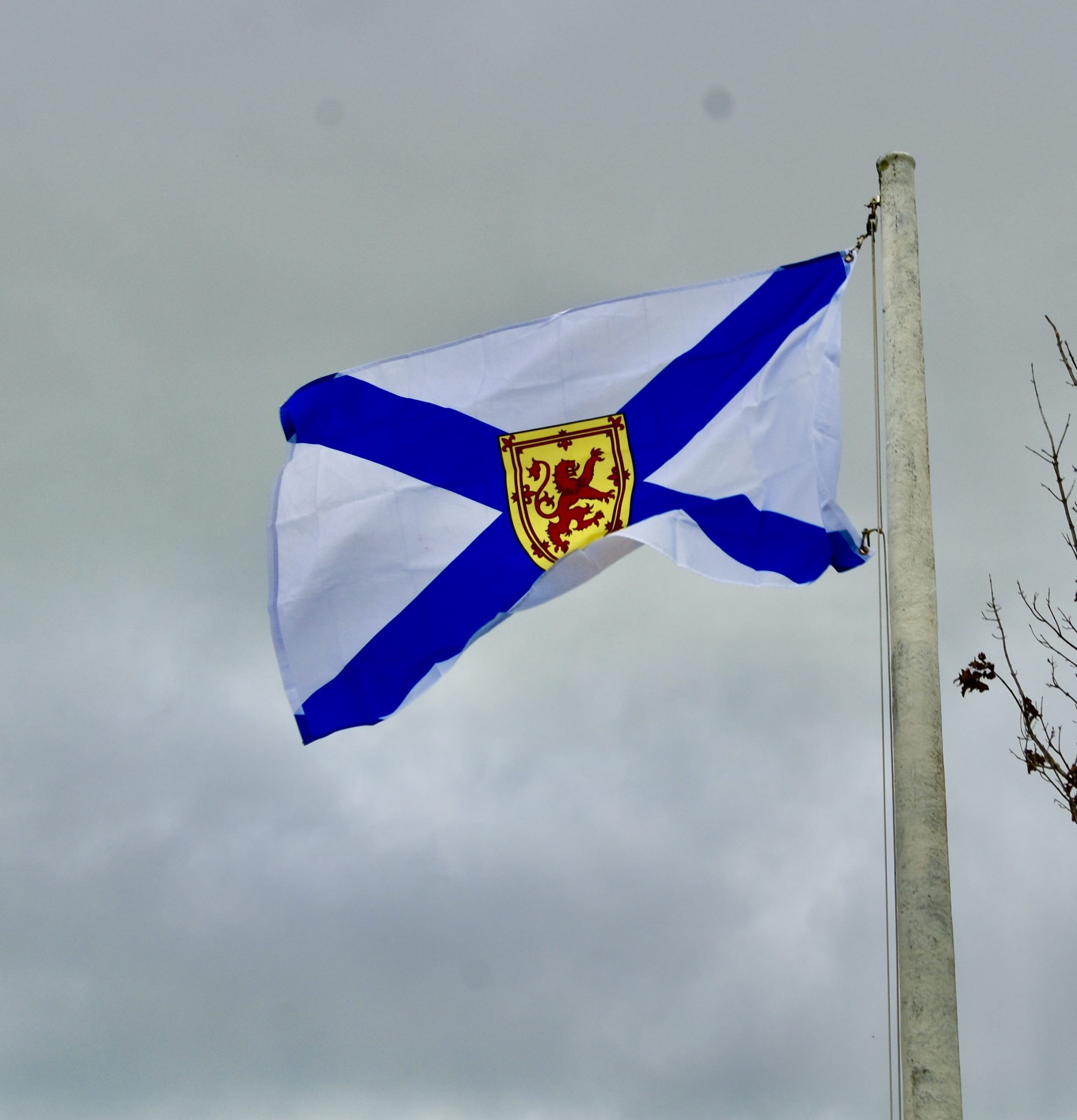
As the name implies, the museum is dedicated to the history of the migration of the Scots from Nova Scotia to New Zealand under the aegis of Rev. MacLeod. There are photos of a majority of those who made the journey and the names are like a Who’s Who of Pictou County names including MacQueen’s who are definitely Alison’s relatives on her mother’s side. They are dour looking lot indeed and I am surprised at how old most of them were. It is 16,300 nautical miles from Nova Scotia to New Zealand and it’s hard to get your head around the fact that they built their own ships, provisioned them and then set off on a sea journey that would last well over a year. Norman MacLeod must truly have been one hell of a preacher to inspire this kind of loyalty, faith and determination.
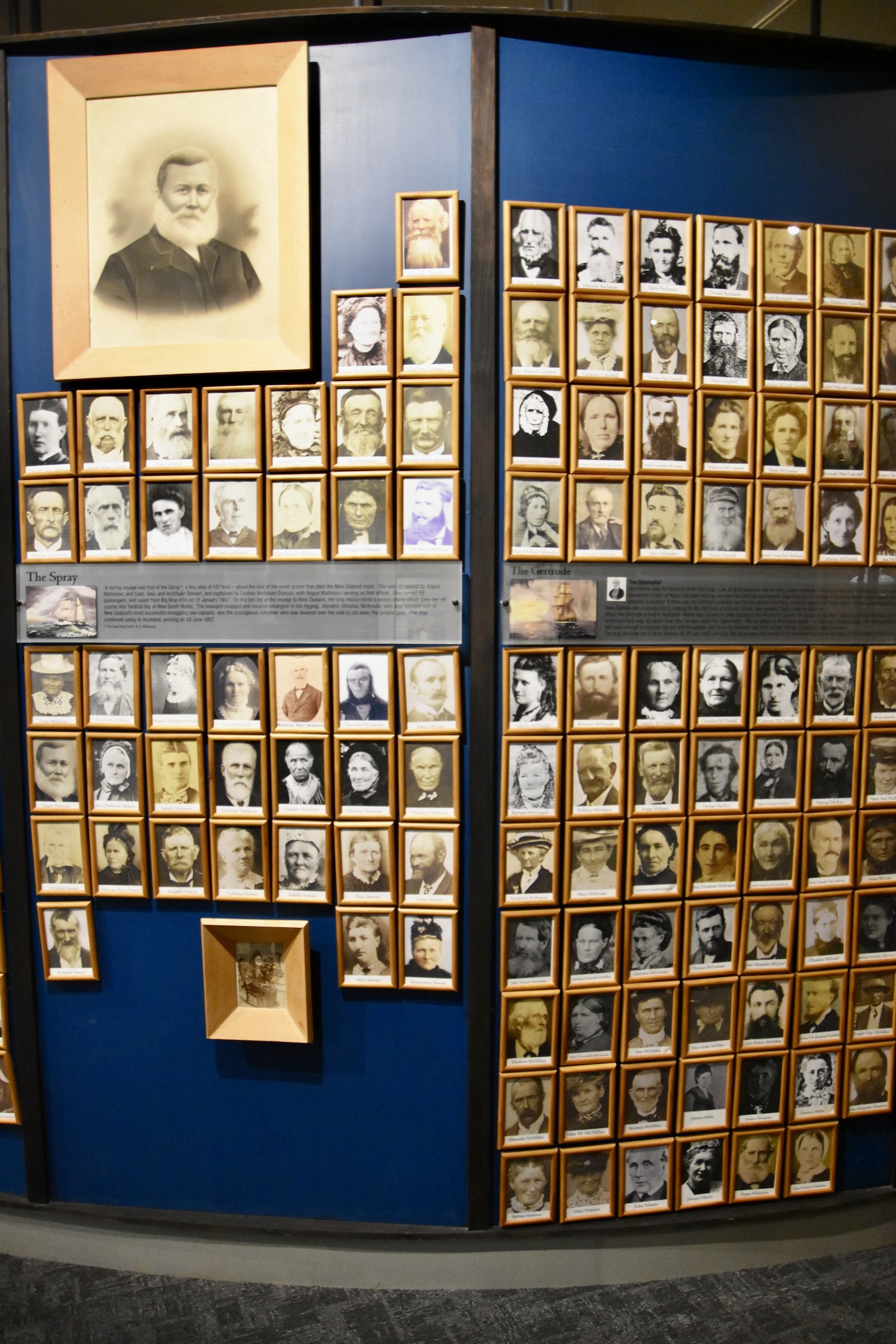
There are a number of exhibits that are really quite extraordinary including this display of Mi’kmaq beadwork and quill work. These are beautiful pieces in pristine condition, as good as any in the Nova Scotia Museum in Halifax, and I tell the docent in charge that these are extremely valuable and they should be very careful about protecting them. The fact that the Scots in St. Ann’s had good relations with the Mi’kmaq helps explain why they subsequently had good relations with the Maori people of the Waipu area. The land they settled on had been purchased, not stolen, by the New Zealand government from the Maori and subsequently sold to the Nova Scotian newcomers. Unlike immigrants directly from Europe, the Nova Scotians were already skilled in the pioneering way of life and according to information on display, were the most successful group to ever come to the country since the Maori some 800 years earlier.

After finishing our tour of the museum we take a walk around town and pass by the site of the Waipu Highland Games which has been held here for 152 years, which is only six less than our own Highland Games.
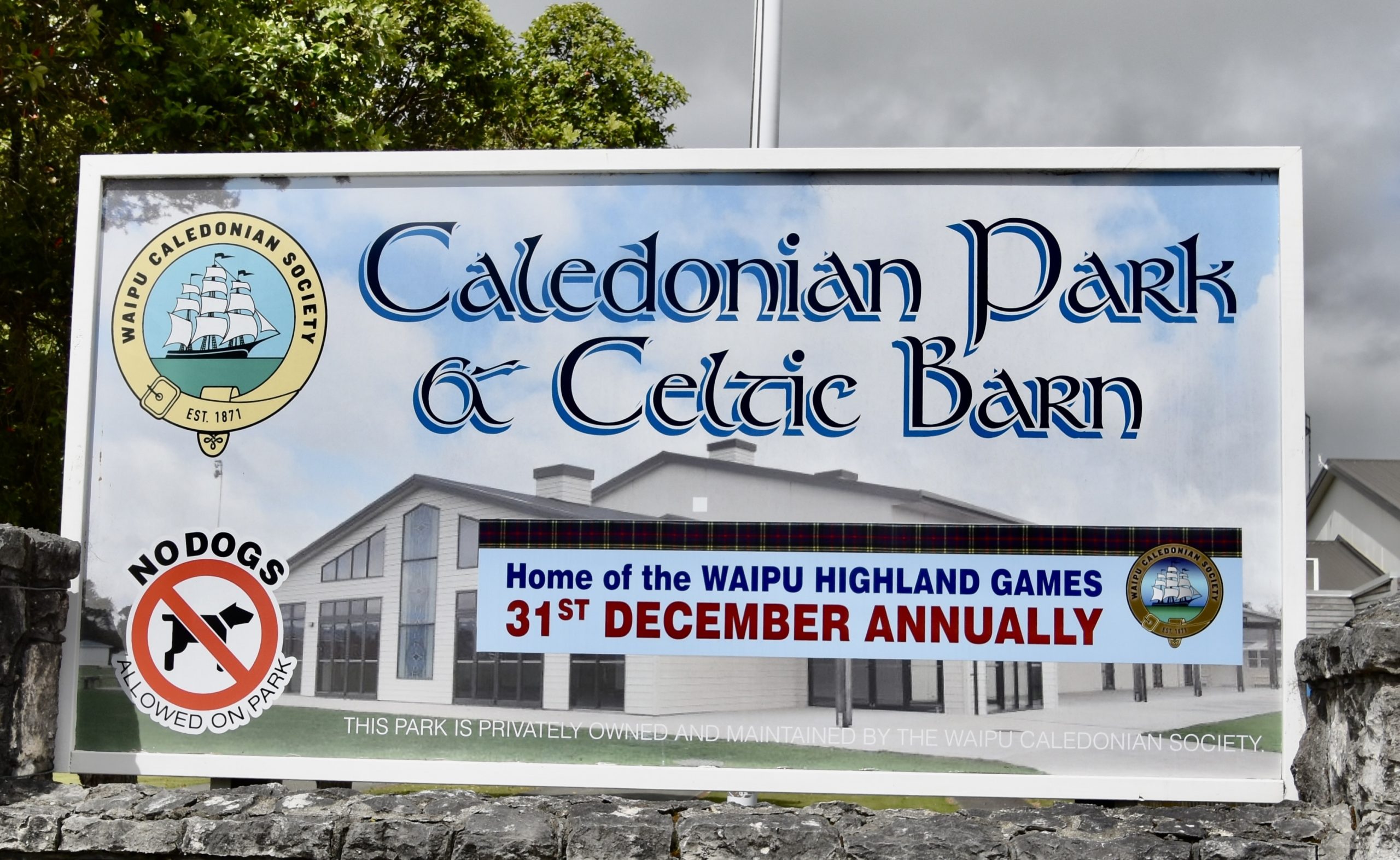
We concluded our short visit to Waipu by having lunch at the Waipu Central restaurant where I was pleased to find out that Rev. Macleod’s legacy lives on in the beer now being locally brewed by his decedents.
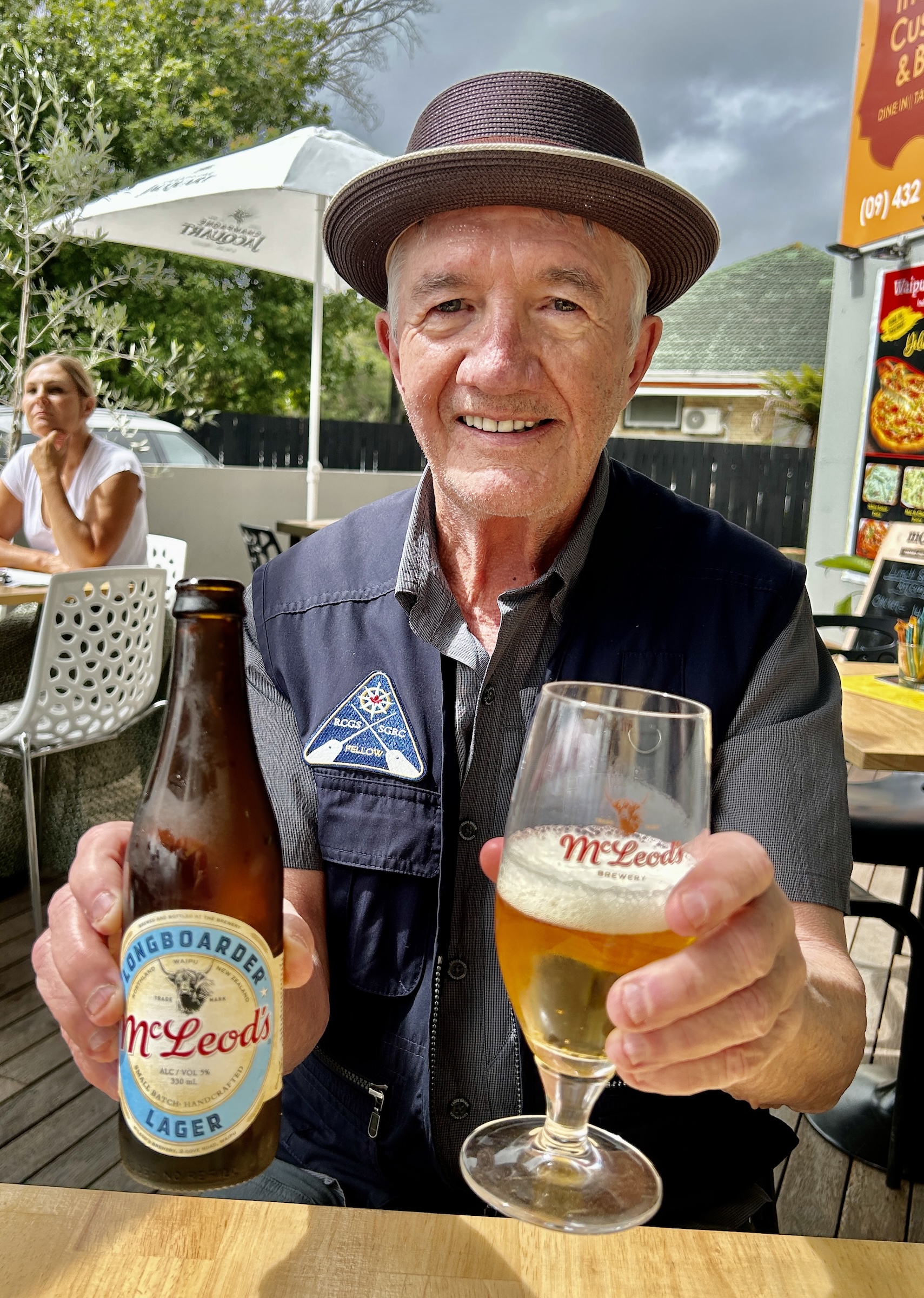
Waipu has lived up to our expectations and more; the Nova Scotia connection is clearly not only important, but seminal in the town’s history.
We will now move further north to the town of Paihia which we will use as a base for exploring the Northland. I hope you’ll join us there.

